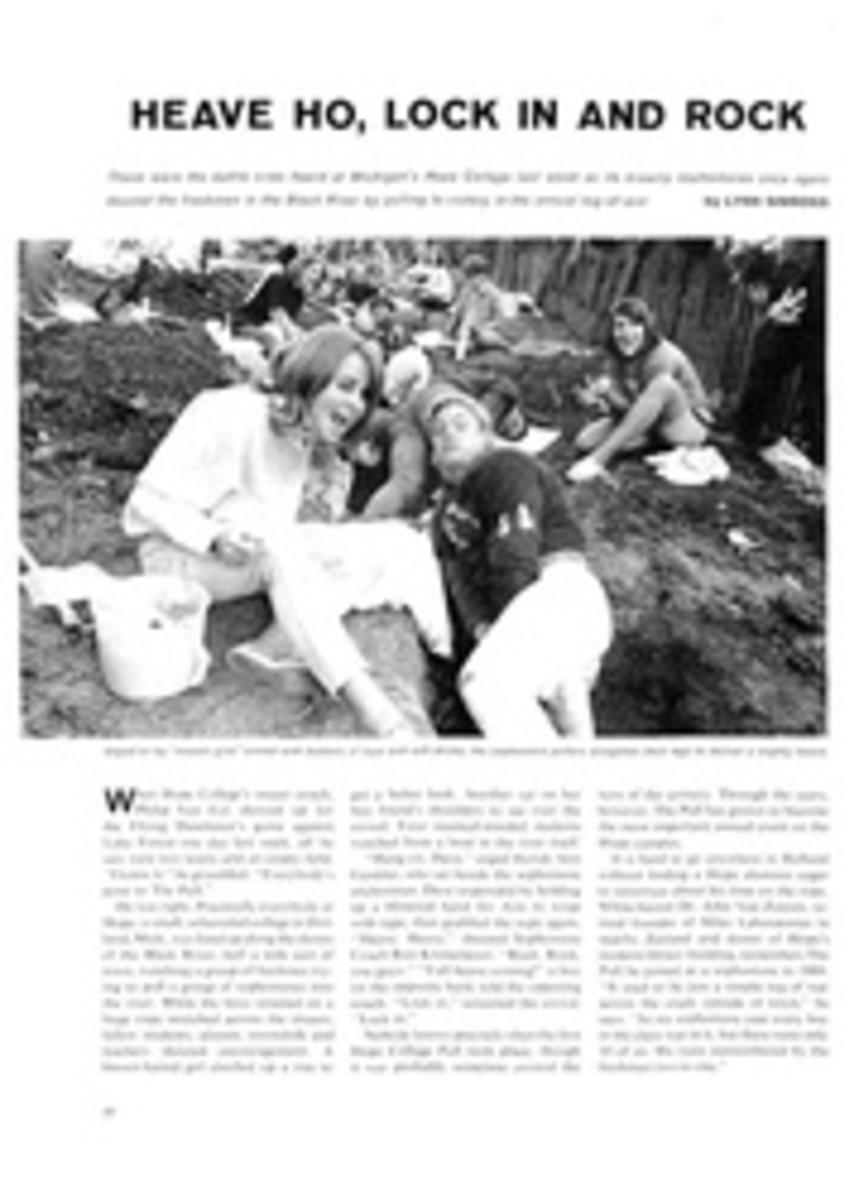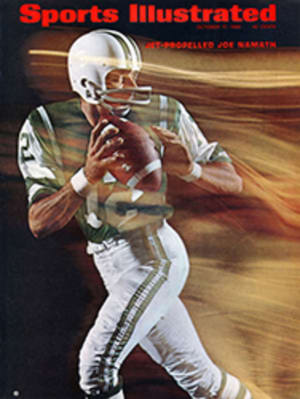
INJI GOES TO FUJI FOR SPEED AND ART
To the Japanese, Mount Fuji is a perfection of nature whose shape and harmony are the essence of all mountains. In their art the Japanese consider Fuji the ideal form. To build a speedway at its foot and race Indianapolis cars there might seem incongruous—a clash of man and nature. But to modern Japanese, especially the intellectuals—or interi, as they are called—auto racing is the newest art and the Indianapolis 500 is its apogee.
So the Japanese built a speedway at Fuji's base. Its first Indianapolis-type race, called the Indy 200 (or "Inji," as the Japanese pronounced it), was run on Sunday and was billed as "the art of our age" and a "dialectical beauty." Promoter Akira Jin, who got his start in show business by presenting the Don Cossacks Chorus 12 years ago, was convinced that the $500,000 it cost to stage the race made him "the sparkplug to create the new art of the 20th century."
For winner Jackie Stewart of Scotland, who roared through the 80-lap, 215-mile race at an average speed of 103.41 mph, the race had no such esthetic implications. He was more interested in material things, especially the $7,000 winner's purse. The esthetic part, as far as the drivers were concerned, was provided by a bevy of Japanese girl greeters. Their beauty may not have been dialectical, but it was harmonious enough. Dressed variously in racing coveralls, miniskirts with Courrèges boots and ten-gallon hats, and flowered kimonos, they were agreeably present when the Indy men appeared at their first big press conference in the New Otani Hotel, and many of the girls carried away autographs penned on their clothing by the drivers.
Only 22 of the 33 cars that were flown to Japan started the race, and when Stewart crossed the finish line only 11 cars were still running. None of the drivers saw themselves as avant-garde artists of a new abstract form that mixes color, sound and speed in varying patterns, yet to the Japanese the first Indianapolis race in Japan expressed the soul of the machine age. In the line and throb of the racing cars the Japanese found a distillate of industrial power. They studied the race for perfection of form and for the divine flaw, the single imperfection that every work of art is said to possess. Whether an accident or accidents would constitute such a flaw was a moot question; as things turned out, they were few and minor.
However, not all the masters were able to compete. Prerace favorite Jim Clark, fresh from his victory in the U.S. Grand Prix, was unable to start because he could not replace bearing sleeves sheared on his Ford engine during the trials. In the early stages the race was a contest between Jackie Stewart, who had held the Indy 500 lead at 475 miles, and England's Graham Hill, the 500 winner. Then, on the 30th lap, Billy Foster of Canada, driving a Vollstedt Ford, took the lead. Stewart in his white-and-red Lola Ford pulled ahead in the 39th lap, and the lead fluctuated between Foster and Stewart, with Hill constantly pressing them both. Foster was in front from the 60th to the 69th lap. Then his engine died.
Next Stewart and Hill fought for the lead, but on the 77th lap Hill pulled off the track. "My engine just stopped," he said. From then on it was Stewart's race. Bobby Unser, driving a Gurney-Ford, was second. Third place went to Arnie Knepper.
By any standard, of art or sport, Inji was a pioneering race. As such, it was plagued with first-time-around difficulties. The biggest problems were mechanical. Indianapolis cars are built to make only left turns on the oval Indianapolis track. Mount Fuji Speedway is a road course built for clockwise driving. Although the Inji cars raced the Fuji course counterclockwise, there remained an ineradicable hairpin curve that required a sharp right turn. During the trials this turn took a heavy toll of engines. The oil pickup on many of the cars is one of the things designed for left turns only, and when they turned right on the hairpin the oil stopped flowing. As a result, bearings seized. Mario Andretti, the U.S. champion, whose early form was promising, ran into that trouble. He broke a connecting rod and burned out the bearings of his car's $23,000 engine during the trials.
At least eight of the 11 cars that dropped out during the trials had similar troubles. Since nobody had been allowed to bring a spare engine, the drivers of the disabled cars were through.
The twists of the Fuji Speedway gave a decisive advantage to cars with four-speed gearboxes. Most of the cars have only two speeds, but Winner Stewart had four, and he used them all. Said Stewart after the race: "I was very pleased to have them," holding up a hand with the knuckles bloodied from banging against the side of his racer while shifting. Unser, who had a two-speed transmission, said he had lost 20 to 30 car lengths on the sharp right.
"I'm sure we could have gone faster if we had had more gears," said Unser, who hit 190 mph on the straights but had to slow to 30 or 35 miles per hour in the hairpin.
The communications around the track were admittedly poor. Whenever the yellow accident flag went down the pace car, driven by Henry Banks, director of competition for the U.S. Auto Club, came onto the track. The yellow flag was dropped twice when cars got into mechanical difficulties and once when a helicopter's downdraft blew foam rubber pillows across the track.
Promoter Jin was bloodied only in the area of his pocketbook. He is 44 and a freewheeling type who went bankrupt two years ago bringing a Wild West show to Japan. Spectacles he did not go broke on included the Bolshoi Ballet and the Leningrad Philharmonic. The Inji 200 was Jin's first racing promotion.
Understandably, for most Japanese the Inji was a mystery. In the first place, there was a good deal of controversy over staging the race at all. The Japanese Automobile Federation initially refused to go along as a sponsor when Promoter Jin announced in July that he intended to bring an international Indy race to Japan. He had hoped to obtain help in sponsoring the race from Japanese auto and accessory makers, but the Japanese manufacturers balked at a basically American race, emphasizing big cars. It was only after strong American pressure at the International Automobile Federation meeting in Italy in September that the race was officially put on its calendar. That left only a little more than a month in which to work out the details. Said Jin bitterly: "I approached all the Japanese auto companies for help, and they all opposed the race for the infantile reason that they are afraid of things superior to what they have coming to Japan. Japan is an island of protectionism, and the entire auto industry is under government protection."
There were no Japanese cars or drivers in the race, and the Japanese had had no chance to become acquainted with Indianapolis cars and drivers. Despite the difficulties encountered (some Japanese scoffed and called it the Inchiki 500, or the fake Indy 500), most of the spectators enjoyed the race. Ting Fumiko Takezaki, a 24-year-old Russian literature student at Waseda University, paid $100 to sit in the royal box. Miss Takezaki, who is studying the romantic poet Pushkin, said she had attended because "I was convinced that Indy racing was the complete opposite of Pushkin."
All in all, it was a field day for the interi. Novelists, movie directors, art critics and the restless younger set were all there in the bright sunshine—but the total crowd was only 50,000. It was the first time Indianapolis racers had left the States since 1958, when a similar race was run at Monza, Italy. The drivers would like to come back to Japan, and auto racing is growing fast as a Japanese sport. But the Indy art requires time to sift down to the Japanese masses. Jin needed a crowd of at least 100,000 to break even. Afterward he smiled wanly and said, "Artistically, the race lived up to my fondest expectations."
PHOTO
With Mount Fuji soaring above, Winner Stewart negotiates the hairpin that became infamous.

